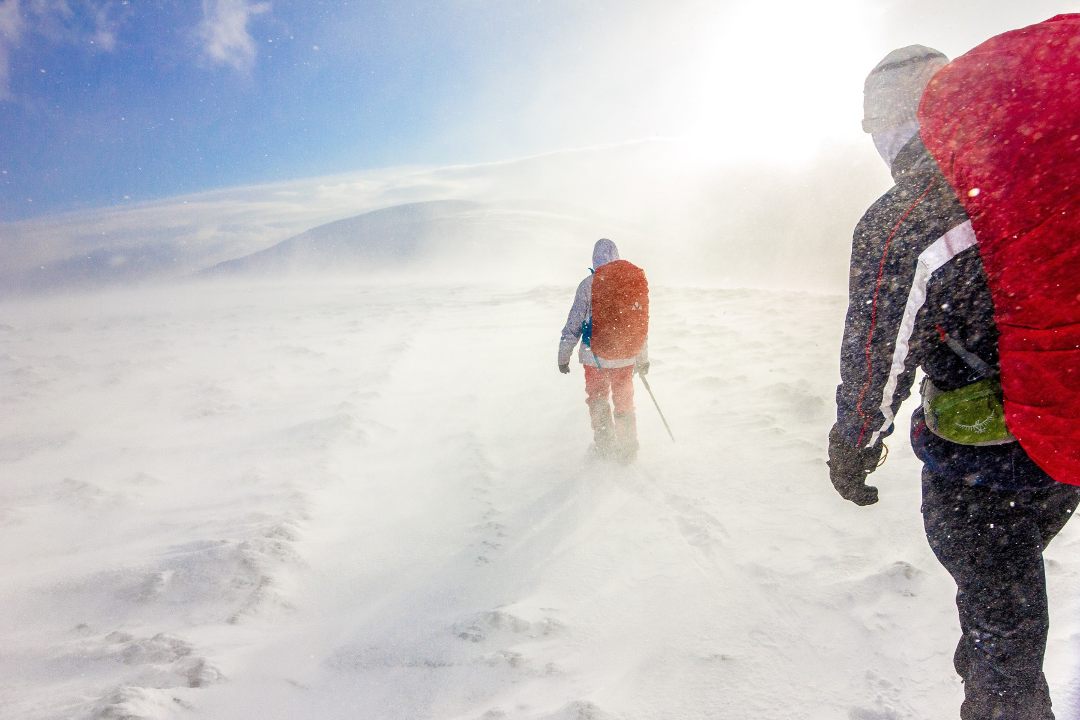Product added to cart
What type of insulation is better for ski clothing: synthetic or natural?

At Söll, we are committed to innovation and sustainability, which is why our garments are made with recycled synthetic materials. But what makes this type of insulation the preferred choice for skiers? Join us in this article where we explore the unique characteristics of synthetic insulation, its ability to retain warmth even in wet conditions, and how its durability and ease of maintenance make it a smart choice for ski clothing. Discover with us why Söll's synthetic garments are not only environmentally friendly but also leaders in performance and comfort on the slopes. Get ready for an informative and enlightening journey!
Types of Insulation in Ski Clothing
Choosing the type of insulation in ski clothing is a crucial factor in ensuring comfort and protection during this activity. There are mainly two types of insulation: synthetic and natural.
Synthetic Insulation
Synthetic insulation is characterized by the use of man-made materials such as Primaloft® or Thermore®. These synthetic materials offer notable advantages, such as being thinner and lighter, ideal for high-intensity activities. Additionally, they have the ability to repel water and provide greater freedom of movement.
Characteristics of Synthetic Insulation
Synthetic insulation is a popular choice in ski clothing due to its specific characteristics. Below are some of the main features of synthetic insulation:
- Lightweight: The synthetic materials used in ski clothing insulation are noticeably lighter compared to natural materials. This provides greater comfort and freedom of movement during skiing.
- Waterproof: Synthetic insulation is known for its ability to repel water. This means that even in wet or snowy conditions, garments with synthetic insulation will maintain their ability to retain heat and keep the user dry.
- Quick-drying: Another highlighted feature of synthetic insulation is its quick-drying ability. This is especially useful in situations where clothing may get wet, either from sweat or weather conditions, allowing the user to stay dry and comfortable for longer periods.
- Compression resistance: Synthetic materials used in ski clothing have excellent ability to regain their original shape after being compressed. This ensures that the garment maintains its thermal insulation even after long periods of use or storage.
- Easy maintenance: Garments with synthetic insulation are usually easier to maintain compared to those with natural insulation. Many synthetic materials are washing machine-friendly, making cleaning and care of the garment easier.
These characteristics make synthetic insulation an attractive option for skiers seeking comfort, performance, and protection in variable weather conditions. Additionally, leading ski clothing brands offer a wide range of synthetic insulation options, such as Primaloft®.
Advantages and Disadvantages of Synthetic Insulation
Synthetic insulation in ski clothing presents various advantages and disadvantages to consider when choosing a jacket for this activity.
Advantages of Synthetic Insulation
- Lightweight: Synthetic materials are thinner and lighter, allowing for greater freedom of movement while skiing. This is especially beneficial in high-intensity activities and adverse weather conditions.
- Water resistance: Synthetic fibers have the ability to repel water, helping to keep the body dry and protected in wet climates or when facing snow and rain during skiing.
- Quick-drying: Synthetic materials tend to have a higher capacity for quick drying. This prevents moisture from accumulating in the garment, providing greater comfort and avoiding potential health issues from moisture retention.
Disadvantages of Synthetic Insulation
- Lower heat retention: Unlike natural materials, synthetics do not offer as effective thermal insulation. Although they provide some level of warmth, they may not be sufficient in extremely cold weather conditions.
- Reduced insulation volume: Due to the thinness and lightness of synthetic materials compared to natural ones, synthetic insulation may be less bulky. This can result in less heat retention and the need to add additional layers to stay warm in colder conditions.
- Environmental impact: While synthetic materials offer advantages in terms of performance and technical features, their production is not environmentally sustainable. Their manufacturing uses non-renewable resources and may generate waste and pollutant emissions in the process.
Natural Insulation
Natural insulation utilizes materials derived from nature such as goose down and merino wool. These materials offer excellent thermal insulation, allowing for the retention of body heat in cold climates. Goose down is especially warm and lightweight, while merino wool is breathable and retains its properties even in humid environments. However, it is important to note that natural materials tend to be bulkier, which can limit freedom of movement.
Characteristics of Natural Insulation
Natural insulation used in ski clothing, such as goose down and merino wool, has particular characteristics that make it stand out in terms of performance and comfort.
- Excellent thermal insulation: Goose down and merino wool are known for their ability to provide exceptional thermal insulation. These materials retain body heat, keeping the skier warm even in extremely cold conditions.
- Breathability: Merino wool, in particular, is highly breathable, allowing moisture to evaporate quickly, keeping the skier dry and comfortable during sports activities.
- Water resistance: Although goose down is not water repellent, merino wool has some ability to repel moisture. This is beneficial in humid climates where wet snow or rain conditions may be encountered.
Despite these advantages, natural insulation tends to be bulkier compared to synthetic materials. This can limit the skier's freedom of movement, especially in high-intensity activities that require flexibility.
Advantages and Disadvantages of Natural Insulation
Natural insulation in ski clothing, such as goose down and merino wool, offers certain advantages and disadvantages to consider. Below are some of them:
Advantages of Natural Insulation:
- Excellent thermal insulation: Natural materials like goose down and merino wool are known for their ability to retain body heat, providing excellent thermal insulation in cold conditions.
- Breathability: Merino wool is a breathable material that allows moisture to evaporate, maintaining a comfortable feeling in humid climates.
- Durability: Natural materials tend to be durable and resistant to wear, ensuring a longer lifespan for the garment.
- Sustainability: Being natural materials, goose down and merino wool are more environmentally sustainable options.
Disadvantages of Natural Insulation:
- Volume and weight: Although they provide excellent insulation, natural materials tend to be bulkier and heavier, limiting freedom of movement during skiing.
- Performance in humid climates: Unlike synthetic materials, natural insulations may lose some of their thermal insulation properties when exposed to moisture, which can be uncomfortable for the user in adverse weather conditions.
- Longer drying time: In case of getting wet, natural materials usually require more time to dry compared to synthetics, which can be inconvenient if the garment needs to be reused quickly.
Considering these advantages and disadvantages of natural insulation is crucial for making an informed decision when choosing a ski jacket, taking into account both individual needs and the weather conditions in which this sport will be practiced.
Factors to Consider When Choosing the Type of Insulation
Activities and Weather Conditions
When choosing the type of insulation for a ski jacket, it is important to consider the activities that will be carried out and the weather conditions in which skiing will be practiced.
- For low-intensity activities in cold and dry climates, natural insulation may be a good choice. Goose down and merino wool provide excellent thermal insulation in these environments.
- On the other hand, for more intense activities or in wetter conditions, synthetic materials are recommended. They are thinner, lighter, and water-repellent, making them ideal for staying dry and comfortable during skiing.
Comfort and Performance
In addition to activities and weather conditions, comfort and performance are key factors to consider when choosing the type of insulation in a ski jacket.
- Natural materials such as goose down and merino wool are breathable and maintain their insulating properties even in humid environments. However, their bulkiness may limit freedom of movement.
- On the other hand, synthetic materials offer lightness and thinness, allowing for greater freedom of movement during activity. Additionally, their water resistance makes them ideal for adverse weather conditions.
Considering these factors will help find the most suitable type of insulation for each skier, ensuring comfort, performance, and protection against cold and moisture during skiing.
Recycled Thermal Insulation: Innovation and Sustainability
At Söll, we embrace a vision where ski fashion and sustainability go hand in hand. Our recycled thermal insulation is a clear example of this commitment and the adaptation of Söll's technology to new trends. By choosing not to use natural duck feathers, we opt for an innovative and environmentally friendly alternative: Primaloft, a thermal insulator made from recycled plastic bottles.
This material is not only a ally in preserving our natural environment, but it also offers remarkable technical benefits. Its ability to prevent water absorption is crucial in skiing, where exposure to snow and moisture is constant. Unlike natural feathers, Primaloft maintains its insulating capacity even when wet, ensuring that skiers stay warm and dry during their snow adventures.
In addition, Primaloft's recycled thermal insulation stands out for its durability and ease of maintenance, essential aspects for ski equipment that often undergoes extreme conditions. This choice not only reflects our efforts to reduce environmental impact but also ensures our customers high-quality and long-lasting products.
At Söll, we work tirelessly to create more sustainable collections, combining natural materials and recycled fabrics. Our recycled thermal insulation is a firm step towards a more conscious and responsible ski fashion. With every garment we design, we reaffirm our commitment to environmental protection and to offering our customers the best in performance and comfort. Discover the power of recycled thermal insulation with Söll and join us on this journey towards a greener future!







